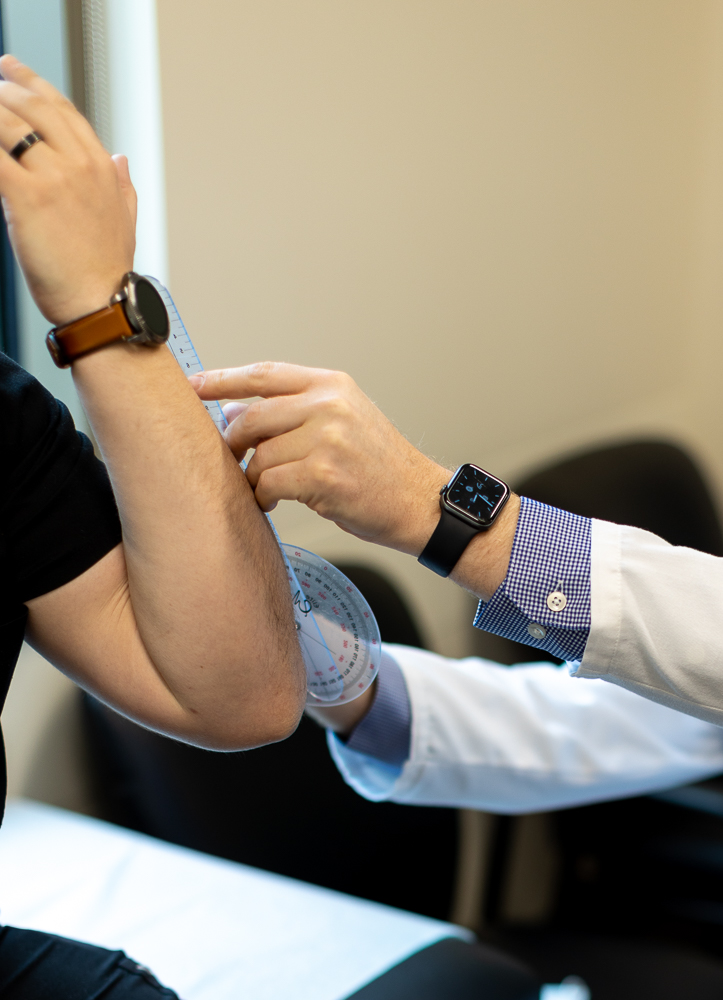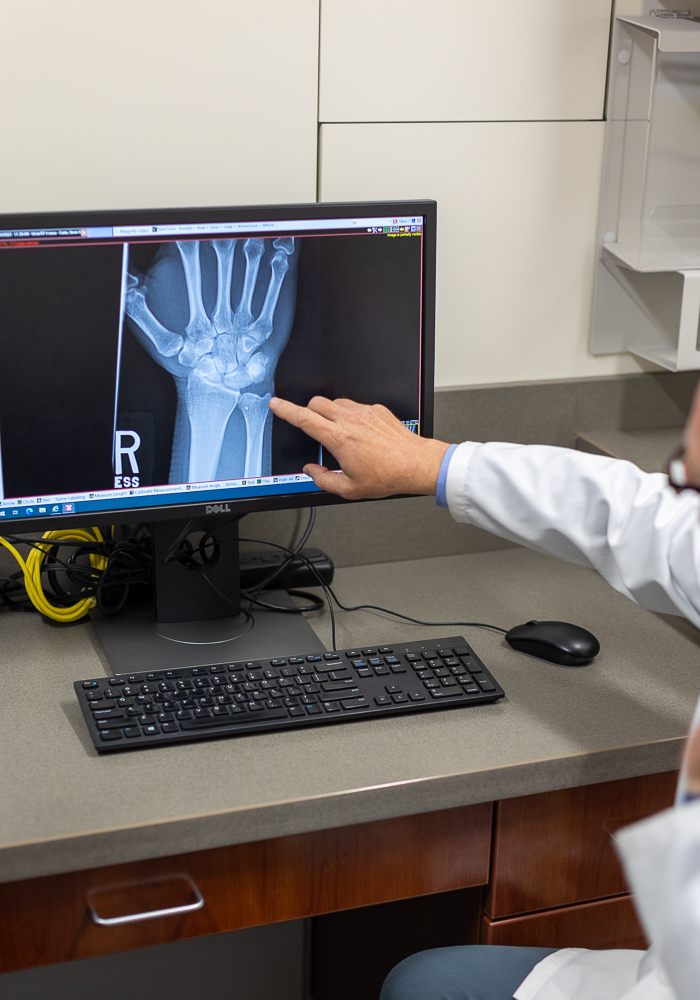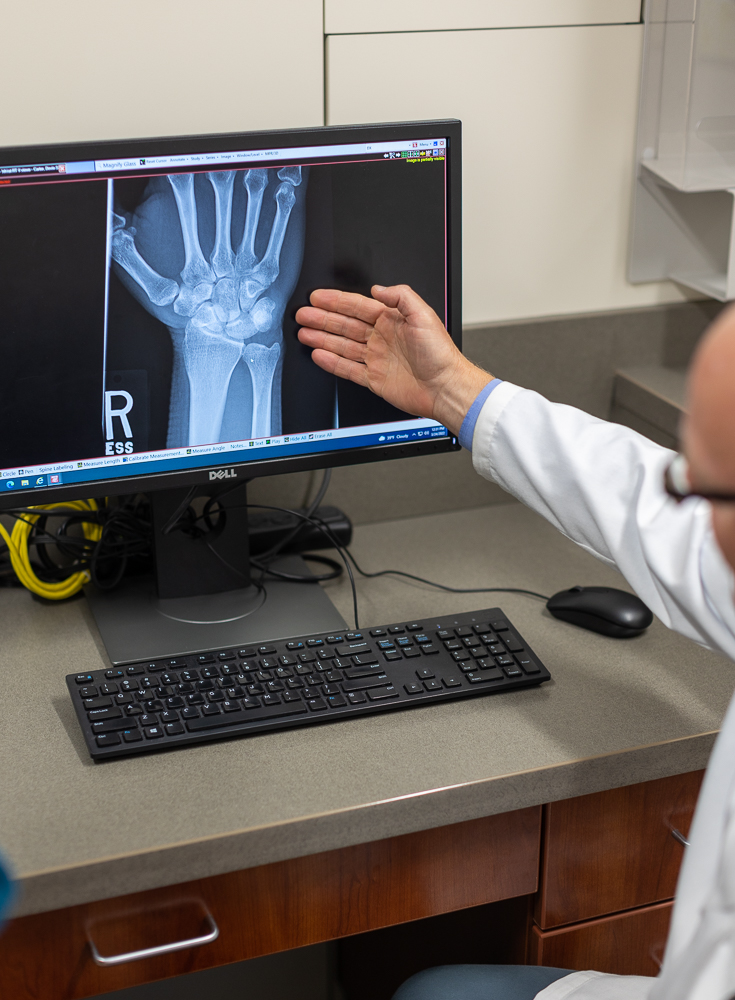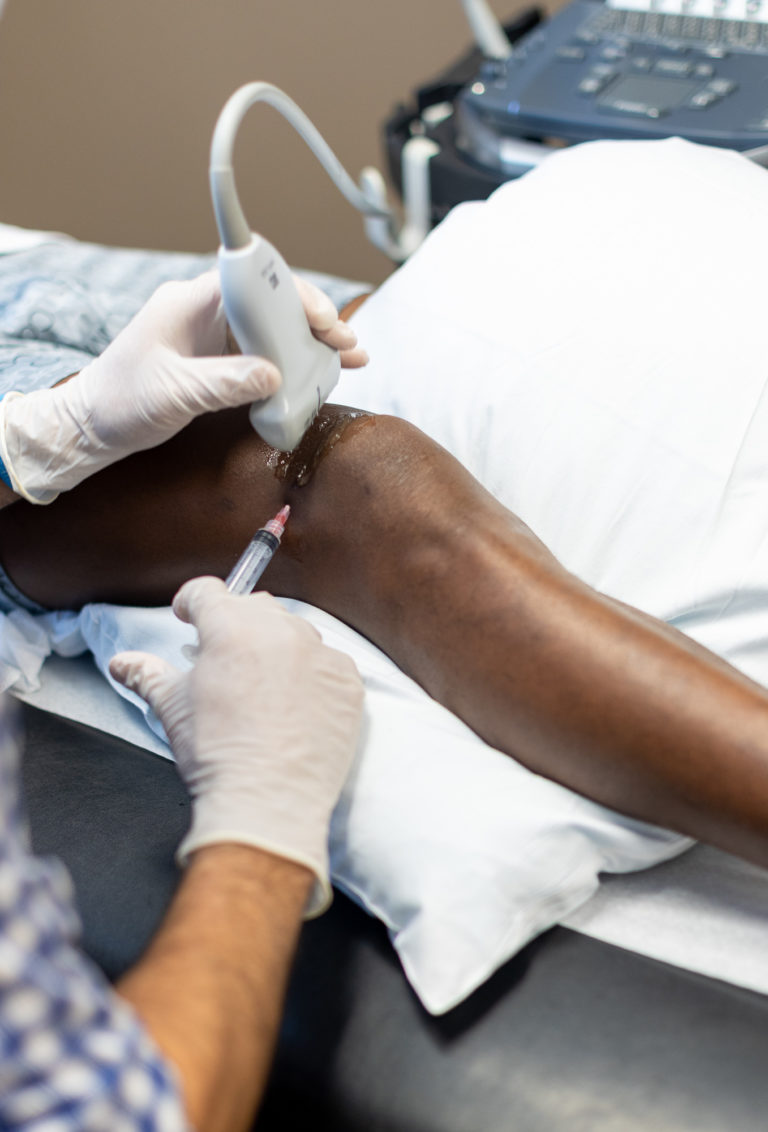Therapeutic Injections in Kansas City
Therapeutic Injections
Your Solution to
Hand & Wrist Discomfort.

Understanding the Basics Behind Hand & Wrist Pain
What is Therapeutic Injection?
For most of us, joint pain will occur at one point or another in our lives due to an acute injury or a chronic condition. Your hand and wrist are no exception. The complexity of the hand, its overall usage and the mobility associated with its structures increase the likelihood of an injury.
Hand and wrist injuries can greatly impact our ability to live our lives. Acute injuries, years of repetitive motion, or trauma building up over time, can all prevent you from doing the things you love
Regardless of the hand or wrist issues you’re dealing with, whether it’s a sprain, fracture or ligament tear, help is available. One common non-surgical method we use to treat hand and wrist pain is a therapeutic injection. By injecting medication directly into the painful area we can help ensure lasting relief that gets you back to the activities you love.
If your provider determines that therapeutic injections in Kansas City are the right treatment for your needs, we’ll create a customized plan. Each recommendation made by our physicians depends on your specific symptoms and personal goals.
Your First Appointment for Hand & Wrist Injuries
Choosing therapeutic injections in Kansas City is a decision that typically involves guidance from your primary care doctor and orthopedic physician. When you choose Kansas City Orthopedic Alliance, one of our highly-trained orthopedic hand and wrist specialists will conduct an initial evaluation to better understand your condition. After a complete review of your results, your provider will discuss whether therapeutic injections are the best treatment option for you.
Some signs and symptoms that may require therapeutic injections in Kansas City include:
- Swelling
- Pain
- Instability
- Numbness
- Popping/Clicking/Locking
- Decreased Range of Motion

Kansas City Orthopedic Alliance hand & Wrist Assessment
Assessing the Injury
Determining the proper treatment process for hand and wrist injuries starts with an assessment from one of our experienced providers. You can think of hand and wrist pain as a spectrum, with some instances being more severe than others.
The KCOA orthopedic specialists always focus on each patient and their concerns before creating a treatment plan.
Therefore, during your initial appointment, we will often ask questions such as:
From there, we can decide what treatment option will align best with your needs and lifestyle goals.
- Does your pain currently limit you or your activities?
- Has your pain progressed or worsened recently?
- Did you notice or hear a popping sound at the time of your injury?
- Have you noticed any change in your symptoms or the cyst that has made it more challenging to function?
- What are your lifestyle goals?
- How has the cyst affected those goals?
Examinations
Once we’ve completed a proper assessment, your provider will often begin with a physical examination to help determine the origin point of your pain. In some cases, advanced testing may be required for a full diagnosis. This may include:
X-Ray
Also called radiographs, an X-ray captures a picture of the wrist. Orthopedic physicians may order an X-ray to rule out the possibility of a fracture (broken bone), osteoarthritis, or other bone-related conditions.
Magnetic Resonance Imaging (MRI)
MRI captures images of muscles, bones, ligaments, cartilage, and tendons to help provide information other tests can’t detail. During an MRI, you will lie on a table that slides into a tube-shaped scanner. The machine creates a magnetic field around you, using pulsed radio waves to form the MRI images.
Electromyograms (EMG) & Nerve Conduction Studies
Our board-certified physiatrists utilize electromyograms (EMGs) and nerve conduction studies to help determine whether nerves and muscles respond properly to stimuli. The EMG measures the electrical activity of your muscles at rest and in motion, while nerve conduction studies determine how fast and effectively your nerves and muscles receive electrical signals.
Symptoms
Common Signs and Symptoms of Hand & Wrist Injuries
There are numerous potential causes of pain when it comes to hand and wrist injuries. Similar to other areas of your body, there are a number of different parts working together in your hand and wrist. This leads to many different chances for injury or chronic pain, with each instance having their own set of symptoms.
Therapeutic injections of the hand and wrist are a great way to achieve effective outcomes without surgery. We offer a range of injections, such as steroids, viscosupplementation (hyaluronic acid gel), and more. We can determine the right type of injection based on your individual needs.
Hand and wrist injuries can also worsen based on certain risk factors, such as age, activity level, whether you’re a healthy weight, and more.
Causes
Causes of Hand & Wrist Pain
The body has a number of different joints that all work in unison in order to function normally. However, all of these different working parts means that your hand and wrist can face a variety of potential injuries. How severe your hand and wrist pain is will vary depending on a few different key factors, including both the location and the source of the problem.
Whether you’re suffering from an acute or chronic injury, the hand and wrist specialists at Kansas City Orthopedic Alliance are here to assist. We’ll help you find the root cause of your pain and determine whether a wrist arthroscopy is right for you or if you require a different treatment. Common causes of hand and wrist pain include:
Treatments
In most cases, surgery is not the first option for treatment at Kansas City Orthopedic Alliance. If we can treat your with more conservative treatments, we’ll choose those options. In the case of therapeutic injections, surgery will not be required unless the symptoms worsen.
Occupational/Physical Therapy
A trained therapist will focus on the issue that’s causing the pain or symptoms as well as the deficits that are present as a result of the injury. Stretches, strengthening exercises, manual soft tissue work, and modalities like hot and cold therapy may be used to help you recover.
Medications
Your doctor may recommend over-the-counter NSAIDs (Non-steroidal anti-inflammatory drugs, such as Advil) or prescription medications. Especially with NSAIDs, you should always talk to your doctor to ensure they are the right treatment for you.
Regenerative Medicine
Regenerative medicine might be considered in the general category of therapeutic injections or can be a separate treatment used in conjunction with a pain-relieving injection. Regenerative medicines like stem cell injections or platelet-rich plasma can help nourish worn or damaged tissue. This option works best if you have mild-to-moderate wrist pain.
F.A.Q.
Frequently Asked Questions
Kansas City Orthopedic Alliance is here to help.
Our care is personal. Our team is knowledgeable. And we’re more available than ever.
With access to board-certified specialists across Kansas City, we have the tools to meet almost every musculoskeletal condition.
Our Locations
Overland Park, Kansas
10777 Nall Ave Suite 300 Overland Park, KS 66211Leawood, Kansas
3651 College Blvd. Leawood, KS 66211Kansas City, Missouri
Saint Luke's Medical Plaza #1 4320 Wornall Rd., Ste. 610 Kansas City, MO 64111Belton, Missouri
Belton Regional Campus 17067 S Outer Rd #301 Belton, MO 64012Blue Springs, Missouri
St. Mary’s Medical Center, Main Entrance 203 NW R.D. Mize Road, Suite 200 Blue Springs, MO 64014Shawnee Mission, Kansas
7450 Kessler St ste. 140 Merriam, KS 66204Prairie Star (Lenexa, Kansas)
Prairie Star 23401 Prairie Star PkwyBldg. B, Ste. 220 Lenexa, KS 66227




